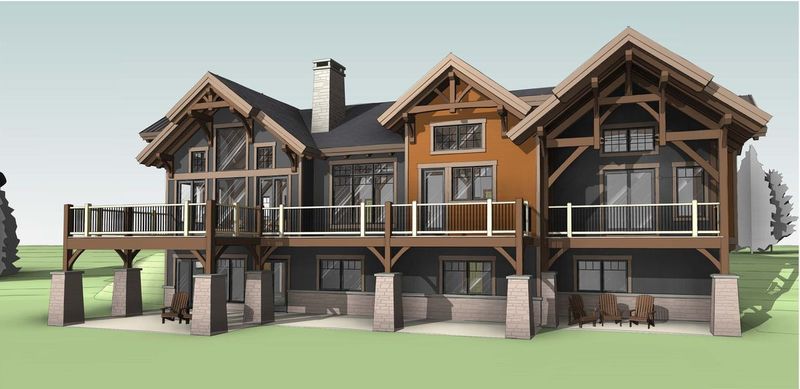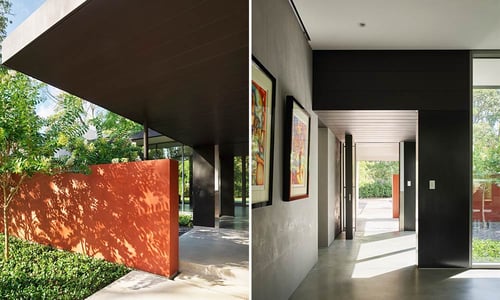What Are The Challenges Of Designing Architecture For Extreme Climates?
.jpg?width=3000&name=modern-home-in-a-cold-climate-snow-(featured).jpg)
Building a home in cold climates brings its own set of challenges and considerations that must be addressed in the design phase of the project. From the materials used to the orientation of the home, there are plenty of factors that can play into how well the home is suited to withstand harsh winter weather.
If you're considering building a home in a cold climate area, here are 5 key considerations to keep in mind.
#1: Insulation
One of the most critical components of building a home in a cold climate is insulation. Good insulation helps keep the heat inside the home during the winter, reducing energy costs and making the home more comfortable to live in. Additionally, proper insulation ensures that the home is able to withstand the freeze-thaw cycles that occur with changes in weather.
When designing your home, it's important to pay careful attention to the type and amount of insulation used in the walls, floors, and roof. The U.S. Department of Energy recommends that homes in cold climates have at least R-60 insulation in the attic, R-30 in the walls, and R-25 in the floors.
#2: Orientation
Another factor to consider when building a home in a cold climate is the orientation of the home. Ideally, the home should be positioned so that it receives maximum sunlight during the winter months, which helps to naturally warm the home and reduce heating costs.
The orientation of the home can also impact how well the home is able to withstand strong winds and snow drifts. When building your home, try to choose a site that is sheltered from prevailing winds and position the home so that the roof slope is perpendicular to the prevailing wind direction.
#3: Materials
The materials used in the construction of a home in a cold climate are also incredibly important. Homes in cold climates must be able to withstand extreme temperatures, heavy snow loads, and freeze-thaw cycles without suffering damage.
Some materials that are particularly well-suited to cold climate construction include concrete, brick, and stone. These materials are highly durable and offer excellent insulation properties, making them a smart choice for use in walls and foundations.
#4: Heating System
When it comes to heating a home in a cold climate, there are many different options to consider. Some popular choices include radiant heat flooring, geothermal heating systems, and high-efficiency furnaces.
When choosing a heating system, it's important to consider the total cost of ownership, including initial installation costs, ongoing maintenance costs, and energy efficiency. Additionally, you should consult with your builder or contractor to ensure that the heating system is appropriately sized for the home, taking into account the local climate and the home's insulation properties.
#5: Ventilation
Finally, ventilation is a crucial consideration when building a home in a cold climate. Proper ventilation helps to ensure that the air quality inside the home remains healthy and comfortable, while also preventing moisture buildup that can lead to mold and mildew growth.
When designing your home, be sure to include a ventilation system that is appropriate for the home's size and layout. This may include a mechanical ventilation system, such as a heat recovery ventilator, or a natural ventilation system, such as strategically placed windows or vents.
FAQs
What is the best type of insulation for a home in a cold climate?
The best type of insulation for a home in a cold climate depends on a variety of factors, including the climate in your area, the size of your home, and your budget. Some popular options include fiberglass batt insulation, blown-in cellulose insulation, and spray foam insulation.
How can I ensure that my home is properly insulated?
The best way to ensure that your home is properly insulated is to work with a reputable builder or contractor who is experienced in building homes in cold climates. They will be able to recommend the best type and amount of insulation for your specific home design and location.
What is the best heating system for a home in a cold climate?
The best heating system for a home in a cold climate depends on your specific needs and preferences. Some popular options include radiant heat flooring, geothermal heating systems, and high-efficiency furnaces.
How can I ensure that my home is properly ventilated?
To ensure that your home is properly ventilated, it's important to work with a builder or contractor who is experienced in building homes in cold climates. They will be able to recommend a ventilation system that is appropriate for your home's size and layout.
What are some other considerations to keep in mind when building a home in a cold climate?
Some other considerations to keep in mind when building a home in a cold climate include choosing a site that is sheltered from prevailing winds, using materials that are well-suited to cold climate construction, and selecting windows and doors that offer good insulation properties.
By keeping these considerations in mind and working with an experienced builder or contractor, you can ensure that your home is built to withstand the unique challenges of living in a cold climate. With proper insulation, orientation, and ventilation, you can enjoy a warm, comfortable home all winter long.


.jpg?width=3000&name=modern-home-in-a-cold-climate-snow-(featured).jpg)
Post a Comment for "What Are The Challenges Of Designing Architecture For Extreme Climates?"